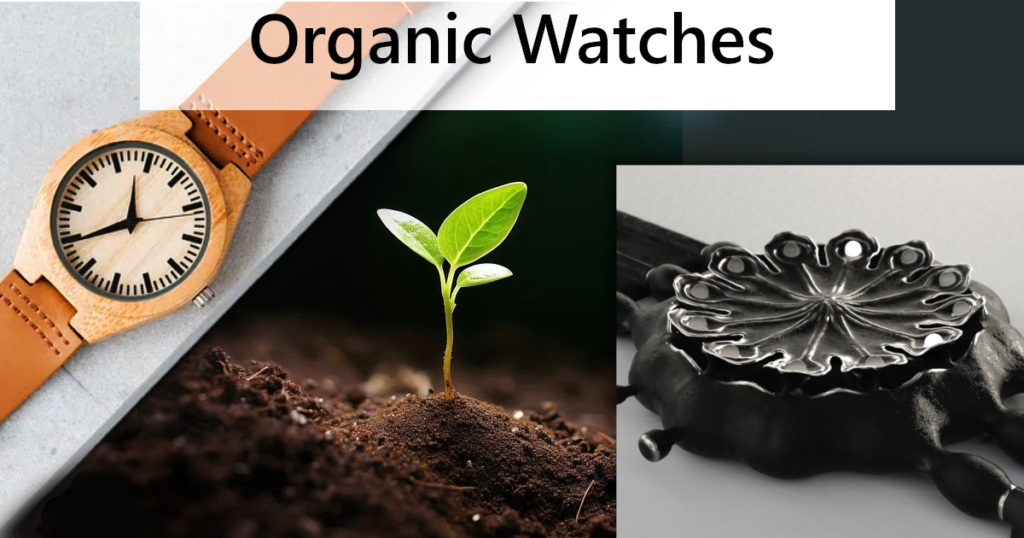
The image above shows our Poppy Seed Pod watch watch on the right.
Sections of this article:
- Concepts.
- Organic Watches: Design Concepts
- Watches Incorporating Organic Material.
- Wood Watches
- Sustainability in Watchmaking
Introduction
This article starts with the meaning of organic, looks at different organic watch design concepts, watches influenced by organic shapes and forms, watches Incorporating organic material, wood watches, and sustainability in watchmaking.
I show many examples during the article.
Note . . . I only use watch images with permission from the watchmaker (unless the photos are public domain or creative commons), so some of the watches I present here might be lacking an image.
Concepts.
What Does “Organic” Mean?
The dictionary definition is: “relating to or derived from living matter”. I’ll explain various ways that this relates to organic watches, below.

The term “organic” encompasses a philosophy centred on natural processes and sustainability.
In some contexts, it signifies products cultivated without synthetic chemicals, promoting ecological balance and biodiversity.
Beyond these things, “organic” extends to lifestyle choices favouring natural materials and environmentally friendly practices. It embodies a commitment to purity, health, and harmony with nature, advocating for responsible stewardship of resources and fostering a holistic approach towards sustainable living for both individuals and the planet.
We’ll see how these factors relate to organic watches, in this article.
Organic Watches: Design Concepts
Organic watch design can mean a variety of different things, including:
- a watch influenced by organic shapes or forms
- a watch incorporating parts made from organic materials (such as wood)
- a watch which uses sustainable or environmentally friendly practices.
These factors are often combined . . . many watches which use organic materials such as wood are also aligned in various ways with conservation, ethical practices, sustainability, environmentally-friendly and eco-friendly initiatives, as you’ll see below when I talk about wood watches.
This article also has a section below, on sustainability in watch design.
But first, let’s look at watches influenced by organic shapes and forms.
There is a very unique and interesting hand-engraved watch, the Kees Engelbarts Organic Skeleton. These watches feature mythical creatures like unicorns and dragons, and are skeletonized more than most watches. Some also have deliberately added organic textural elements as well as rough textures of materials, and relate to the creator’s love of Japanese metalworking techniques.
This makes them part of the world of art jewellery.
Here’s the difference between fine jewellery and art jewellery:
Fine jewellery:
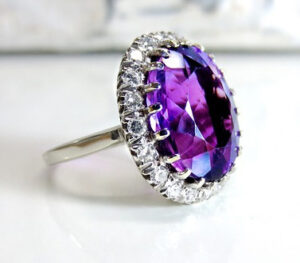

. . . which includes all the jewellery made until about a century ago, as well as most of the jewellery made today (other than fashion/costume jewellery which is an imitation of fine jewellery using less expensive materials), is characterized by its use of simple geometric shapes and smooth polished surfaces. It also focuses on, and is valued by, expensive materials such as gold and gemstones, has a strong influence from mass-production, and is more commonly designed by a committee than an individual (despite advertising claiming the contrary).
Art jewellery, by contrast, often uses complex, organic or fractal forms, rough or broken surfaces, and is art rather than design, being made by an individual as a personal exploration. And it typically has a strong story or concept:
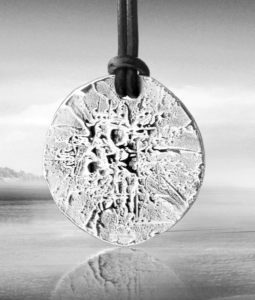
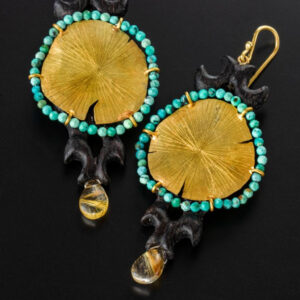
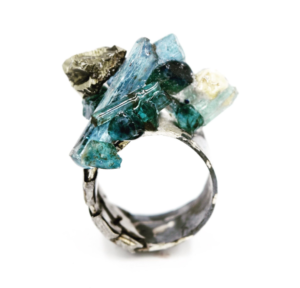
There are a few watches which have a significant art-jewellery influence (more on art jewellery and watchmaking, here), as well as our own UnconstrainedTime watches which are, arguably, the first conceptual art jewellery based watches (see a couple of them below)
It could also be said that wood watches are part of the art-jewellery world, since they are using a material which has organic markings and textures, and is typically a lot less valuable than precious metals.
There are watches which have the design influences that most watches have, which are fine jewellery and mechanical functionality, plus a degree of organic influence. An example of these is the Dietrich Organic Time OT-1, which has green hands with leaf-influenced shapes as well as a case with slightly more complex curves than most. Note how those watch hands are still very much part of the fine jewellery world, rather than being art jewellery, since they are very simplified, symbolized leaf shapes.
By contrast, our own UnconstrainedTime watches (as well as our wood watch, which we’ll talk about in a later section of this article) include (at the time of writing) two watches with organic forms that are fundamental to the design of the whole watch, and are obviously part of the world of art jewellery, being complex and raw organic in nature, not at all simplified and symbolized.
These are our Poppy Seed Pod watch, inspired by the amazingly beautiful forms from delicate poppy seed pods:
And our Tropical Crystal watch (below), which uses the concept of interwoven strands similar to tropical tree roots of the strangler fig (below), which is also an example of algorithmic design in watchmaking.
If you like our watches, don’t miss the launch . . . subscribe for email notifications.
Watches Incorporating Organic Material.
While wood is by far the most common organic material used in watches today (so I am devoting a whole section to wood watches, below), there are watches made incorporating other organic materials.
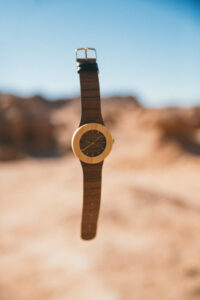
. . . is an interesting example of organic watch design. As well as wood watches (above), they also have watches which incorporate organic material such as real flowers and moss into some of the parts, as well as watches with round or hexagonal marble cases. They also support conservation and eco-friendly initiatives in various ways.
There’s also the Corum Feather Watch, which incorporates part of a genuine peacock feather on the dial. You can see it on their webpage here, if you go to “1970”.
Another example is the Movado and Alexi Lubomirski watch, which features the photographer’s work on the dial. He is a British photographer best known for taking the official photographs of Prince Harry and Meghan Markle’s wedding. He is also a dedicated vegan and animal rights activist, and intends to inspire collaborative positive change, so Movado used a vegan strap for this watch.
Organic watches sometimes incorporate eco-friendly, plant-based components. Piñatex:
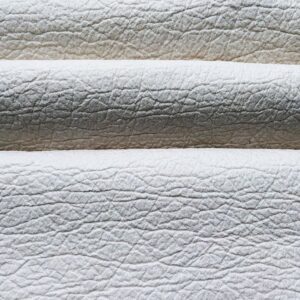
. . . a sustainable alternative to leather derived from pineapple leaf fibres, finds its way into straps for watches from brands like Votch. These cruelty-free and biodegradable straps redefine luxury, embracing vegan fashion without compromising style or durability.
Organic watch design harmonizes innovative craftsmanship with sustainable, natural materials.
Wood serves as a quintessential element in organic watchmaking. Brands like Jord and Treehut (which we’ll look at in more detail below) epitomize this trend, crafting watches from various types of sustainably sourced wood—bamboo, maple, sandalwood, and other species. These watches exude a warm, earthy charm, each piece having an individual grain pattern, a testament to nature’s unique fingerprint. Their lightweight construction and hypoallergenic properties make them comfortable and suitable for wearers with sensitive skin.
Recycled materials also feature prominently in organic watch design. Companies like Alpina, Sprout (below) and Triwa utilize recycled stainless steel for their watch cases and straps. These timepieces exemplify elegance while minimizing environmental impact by repurposing materials that would otherwise end up in landfills. Our own UnconstrainedTime watches will typically be made from recycled metals such as bronze, gold or silver (as well as sometimes incorporating wood).
Another facet of organic watch design involves upcycling vintage or reclaimed materials. Companies like Wils Fabrik specialize in crafting watches from salvaged wood and repurposed metal. These unique timepieces bear stories of their own, each mark and imperfection adding character and depth, appealing to individuals seeking one-of-a-kind accessories with an eco-conscious touch.
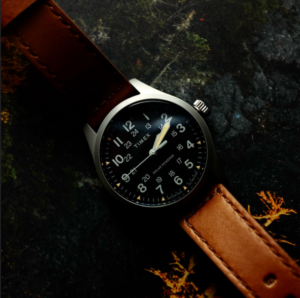
Innovative approaches to power sources further define the realm of organic watchmaking. Solar-powered watches, such as those from Timex (above), Citizen and Seiko, harness natural light to fuel their movements, reducing reliance on traditional batteries and diminishing environmental impact (although some people might understand that the manufacture of solar cells is not particularly environmentally friendly). These watches embody a commitment to sustainability while providing reliable timekeeping.
Beyond materials and functionality, organic watch design often promotes ethical manufacturing practices. Brands like WeWood prioritize sustainability not only in materials but also in their production processes. They partner with reforestation initiatives, planting trees for every watch sold, contributing to global sustainability efforts.

The essence of organic watch design lies not only in its visual appeal but also in its ethos—a fusion of craftsmanship, sustainability, and innovation. It champions a narrative that extends beyond timekeeping, advocating for a more conscientious approach to fashion and lifestyle choices.
Wood Watches
The popularity of watches which incorporate some wood into their design, is shown in the availability of wood watches at the lower end of the market on platforms such as Amazon, eBay and Etsy. Some are standard watch dials of various styles in a wooden case, some have visual elements on the dial such as a world map. Others have wooden straps.
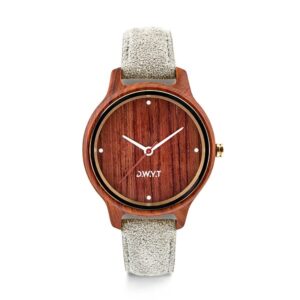
Wood watches, such as those by DWYT (above), a French brand of wooden watches and accessories, exemplify a unique fusion of craftsmanship, sustainability, and style, offering timepieces that transcend traditional watchmaking. These watches, crafted predominantly from various types of wood, encapsulate a blend of natural beauty, eco-friendliness, and functional design.
The appeal of wood watches lies in their aesthetic allure and the sustainable ethos they embody. Brands like Jord, Treehut, and Original Grain have pioneered this niche by utilizing a diverse range of woods, including bamboo, maple, sandalwood, ebony, and walnut, among others. Each wood type brings distinct textures, hues, and grain patterns, creating timepieces that are not just accessories but intricate works of art. The warmth and earthy charm of wood lend a unique character to these watches, offering wearers a sense of connection to nature.
Craftsmanship is at the heart of wood watch production. Meticulously carved and polished, these watches showcase the expertise of skilled artisans. The marriage of wood with other materials like stainless steel or sapphire crystal further accentuates their elegance and durability. The intricate detailing, precision in construction, and attention to the natural variations in wood grains make each timepiece one-of-a-kind.
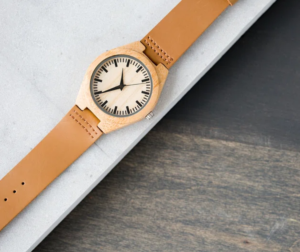
Beyond their visual appeal, wood watches resonate with environmentally conscious consumers. Wood, a renewable resource, contributes to reducing the environmental footprint of watchmaking compared to traditional materials like metal or plastic. Additionally, some brands prioritize sustainable forestry practices, ensuring responsible sourcing of wood to support forest regeneration and biodiversity.
Durability and comfort are key factors that enhance the practicality of wood watches. Contrary to common assumptions, these timepieces are often sealed and treated to be water-resistant and hypoallergenic, with their lightweight nature making them comfortable for everyday wear and suitable for individuals with sensitive skin.
Innovation in wood watch design extends beyond aesthetics. Some brands integrate modern technology, incorporating features like solar-powered movements or chronograph functionalities into wooden cases, merging traditional craftsmanship with contemporary functionality. Watches from brands like WeWood and Grovemade incorporate such advancements, blending sustainability with cutting-edge innovation.
From minimalist designs to intricately engraved dials, these timepieces cater to diverse tastes. Some brands offer customizable options, allowing customers to select wood types, watch faces, and strap materials, and add custom engraving enabling a personalized touch.
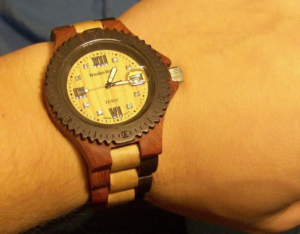
Wood watches also serve as a statement in ethical fashion. Brands such as Analog Watch Co. and Tense Watches (above) emphasize ethical manufacturing practices, ensuring fair wages and safe working conditions for artisans. This ethical standpoint resonates with consumers seeking products aligned with their values of social responsibility and sustainability.
Wood watches symbolize more than just a fashion accessory; they represent a commitment to craftsmanship, sustainability, and individuality. Their allure lies not only in their visual appeal but also in their eco-friendly ethos and dedication to ethical practices. As an embodiment of nature’s beauty, wood watches continue to captivate wearers seeking a blend of style, sustainability, and timeless elegance.
The UnconstrainedTime Cross #1 watch:
. . . incorporates hand-finished fine woods into its unusual form influenced by an old cross from an era before watches were even dreamed of. The wood on each watch can be chosen by the buyer, and combined with a choice of metals for a unique, personalized timepiece which we are making available in a small, numbered release.
Our radically simplified time-display makes it easier for our designs to originate from concepts outside of the watchmaking tradition.
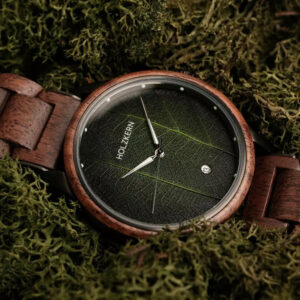
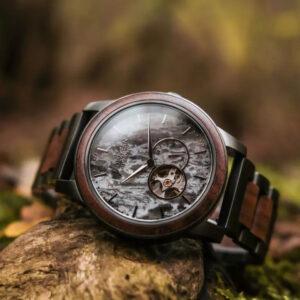
. . . represent a fusion of natural materials, exquisite craftsmanship, and innovative design, carving a niche in the watchmaking industry. The watch above left, is their Edisto Walnut and Leaf, incorporating a real poplar fig leaf on the dial. The watch above right is their Chicago Walnut and Marble watch, dedicated to the city, with its unique skyline.
Originating from Austria in 2015, Holzkern has quickly gained recognition for its distinctive timepieces that seamlessly blend wood and stone elements into their designs, encapsulating a harmonious union of nature and craftsmanship.
At the heart of Holzkern’s ethos is the celebration of nature’s beauty. Each watch is a testament to this philosophy, reflecting the uniqueness of natural elements in every timepiece. The brand’s commitment to sustainability is evident in its use of reclaimed wood and remnants from other industries, minimizing waste and environmental impact.
One of the striking features of Holzkern watches is the variety of wood species used in their creation. From walnut and maple to sandalwood and olive, each type of wood exudes its distinct grain patterns and hues, ensuring that every watch possesses a one-of-a-kind character.
Complementing the wood elements, Holzkern incorporates genuine stone dials into many of its timepieces. Stones such as marble, turquoise, or onyx add a touch of elegance and uniqueness to the watches. The combination of wood and stone creates a striking contrast that captivates the eye, making Holzkern watches stand out as statement pieces that resonate with both style and substance.
Holzkern’s commitment to sustainability extends beyond the materials used in their watches. The company is dedicated to eco-friendly practices throughout its operations. From the packaging made of recycled materials to supporting reforestation projects, Holzkern strives to minimize its ecological footprint, contributing positively to the environment.
The brand’s success can also be attributed to its engagement with customers. Holzkern maintains a strong online presence, connecting with a global community of individuals who share an appreciation for nature-inspired craftsmanship. Through social media, storytelling, and collaborations, they foster a sense of belonging and a shared passion for sustainability and style.
In addition to its standard collections, Holzkern periodically releases limited editions and collaborations, adding an element of exclusivity and anticipation among its followers. These special releases often showcase unique designs, highlighting the brand’s creativity and willingness to push the boundaries of traditional watchmaking.
TruWood watches stand as a testament to the fusion of elegance, sustainability, and social responsibility. Originating from Vancouver, Canada, TruWood has garnered attention in the watch industry for its commitment to crafting timepieces that seamlessly integrate natural elements while making a positive impact on the environment and society. They have some relatively low cost wood watches available.
The hallmark of TruWood watches lies in their eco-friendly construction. The brand meticulously selects sustainable materials for its timepieces. From bamboo and maple to ebony and sandalwood, each watch encapsulates the organic beauty of nature, with distinct grain patterns that make every piece unique.
Beyond the aesthetic appeal, TruWood’s dedication to sustainability extends to its manufacturing processes. The brand prioritizes eco-conscious practices, ensuring minimal environmental impact throughout production. Embracing a carbon-neutral footprint, They work towards offsetting their emissions and contributing to reforestation initiatives, planting trees with each watch sold – an embodiment of their commitment to a greener future.
TruWood stands out not only for its eco-conscious approach but also for its philanthropic endeavours. The brand partners with organizations focused on social causes, such as providing education, clean water, and support for communities in need. Through these collaborations, they extend their commitment to making a positive impact beyond the realm of watchmaking.
Valerii Danevych, a Ukrainian watchmaker, has astounded the horology world with his ground-breaking creations—complicated, all-wood watches that defy convention. Using only wood, Danevych meticulously crafts intricate timepieces that combine traditional watchmaking with innovative engineering.
Every single piece of the watch (aside from the springs) in the watch is made from wood.
What sets Danevych’s work apart is the complexity of his wooden watches. Despite the challenges presented by using wood as the sole material, he integrates remarkable complications such as tourbillons, minute repeaters, and perpetual calendars into his designs. These complications, traditionally seen in high-end luxury watches, showcase Danevych’s unparalleled craftsmanship and technical expertise.
Danevych’s watches exemplify a harmonious blend of artistry, craftsmanship, and engineering. His dedication to pushing the boundaries of what’s possible in watchmaking has earned him admiration and acclaim within the industry. Each of his creations is not only a testament to his skill but also a celebration of the beauty and versatility of wood as a material in haute horlogerie, setting a new standard for innovation in the world of high-end watchmaking.
WeWood watches represent an innovative approach to timepieces, fusing style, sustainability, and environmental consciousness. Founded in Italy in 2010, WeWood has made a significant impact in the watch industry by crafting watches entirely from wood, advocating for eco-friendly practices, and contributing to reforestation efforts.
The brand’s commitment to sustainability is evident in its choice of materials. WeWood sources wood from reclaimed and sustainable forests worldwide. By utilizing materials like maple, walnut, and sandalwood, each watch exudes a natural beauty with unique grain patterns, ensuring that no two timepieces are exactly alike.
Aside from its eco-friendly materials, WeWood focuses on minimizing its environmental footprint throughout its production processes. Moreover, WeWood’s sustainability mission goes beyond crafting watches. For every watch sold, the company partners with non-profit organizations to plant trees. This initiative has resulted in the planting of hundreds of thousands of trees globally, contributing significantly to reforestation efforts and environmental conservation.
Functionality and design excellence are also integral to WeWood watches. The timepieces boast reliable Japanese Miyota movements, ensuring accurate timekeeping. Each watch reflects a blend of elegance and craftsmanship, appealing to individuals who seek stylish accessories with a unique eco-friendly twist.
WeWood watches stand as symbols of a commitment to sustainability and fashion-forward design. Their innovative use of wood, dedication to environmental causes, and stylish aesthetics have garnered a dedicated following among individuals who value both style and ethical responsibility in their accessories, making WeWood a prominent player in the realm of sustainable fashion and watchmaking.
. . . (who seem to have gone out of business now) was a brand recognized for its eco-conscious ethos and dedication to sustainable fashion. Their line of wooden watches represented a harmonious fusion of style, functionality, and environmental responsibility. Founded with a commitment to producing environmentally friendly accessories, Sprout’s wooden watches were crafted using sustainable materials, primarily bamboo and other reclaimed woods.
. . . exemplify elegance and sustainability in craftsmanship. Made in Poland, these timepieces showcase exquisite wooden designs, emphasizing eco-friendly materials like oak, maple, and ebony. Each watch is handcrafted, displaying natural wood grain, ensuring a unique aesthetic. With a commitment to sustainability, Plantwear promotes responsible fashion by utilizing renewable resources and prioritizing ethical practices in watchmaking. These stylish accessories cater to individuals seeking sophistication while embracing eco-conscious choices, marking Plantwear as a leader in sustainable wooden watch craftsmanship.
Every month they plant about 50 trees in a tropical rainforest in Brazil via The Nature Conservancy foundation.
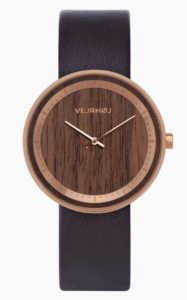
. . . stand out for their Danish-inspired elegance and craftsmanship. Made in Denmark, these timepieces combine wood and stainless steel, epitomizing minimalist design with a touch of sophistication. Vejrhøj embraces sustainable materials like walnut and oak, showcasing natural textures in each watch. Their commitment to quality craftsmanship and eco-consciousness is evident in the use of ethically sourced wood, reflecting a harmonious blend of Nordic aesthetics and environmental responsibility.
Tree Hut wooden watches epitomize nature-inspired elegance and craftsmanship. Handcrafted using sustainable materials like bamboo, zebrawood, and walnut, each watch displays exquisite wood grain patterns, ensuring a unique aesthetic. Based in California, Tree Hut combines natural elements with modern design, creating stylish timepieces that resonate with eco-conscious consumers. Their commitment to sustainability is evident through responsible wood sourcing and a dedication to environmental impact reduction. Tree Hut watches appeal to individuals seeking distinctive accessories that blend fashion-forward design with a profound respect for the environment.
Jord.co wood watches exemplify exquisite craftsmanship and modern design. Created using sustainably sourced wood varieties such as ebony, maple, and sandalwood, each timepiece reflects natural beauty and unique wood grains. Jord.co, based in St. Louis, Missouri, merges innovation and elegance, offering watches that combine traditional craftsmanship with contemporary style.
Their commitment to sustainability includes ethical wood harvesting and eco-friendly practices. Jord.co watches stand as a symbol of timeless elegance and a dedication to both craftsmanship and sustainability. Some of their watches combine wood and semi-precious stones. They often use wood for only a relatively small part of their visually interesting watches.
Original Grain wood watches blend craftsmanship and innovation, creating timepieces that merge wood and steel in remarkable harmony. Using reclaimed wood from sources like whiskey barrels and sustainable materials like bamboo, each watch exudes a unique character.
Based in San Francisco, Original Grain infuses elegance and sustainability, reflecting a commitment to eco-consciousness in their designs. These watches cater to those seeking distinctive accessories that seamlessly merge classic style with environmental responsibility. Some of their watches use wood for the dial, some only for other parts of the watch, combining them with other materials.
Iris and Olive, a British company, produces some of the most visually striking watches which use wood in combination with other materials. An example of their watches use an black steel encasement with the varied tones of the Sandalwood and dark blue-tinged metal. Founded in 2019 they stock a variety of crafts and gifts in addition to their wooden watches.
UrbanDesigner: as well as stocking wooden watches and other items, they even tell you how to make a wooden watch case,
Treeticker wood watches are known for their blend of elegance and sustainability. Crafted from ethically sourced wood like ebony and sandalwood, each timepiece boasts unique wood grains. Treeticker, based in Australia, combines contemporary design with eco-consciousness, offering watches that resonate with nature-inspired sophistication. Their commitment to sustainable materials and responsible practices aligns with the preferences of those seeking distinctive, environmentally friendly accessories.
Wood watches, using a material which is not used in fine jewellery, can be seen as an example of art jewellery influenced watches.
Sustainability in Watchmaking
Sustainability in watchmaking has become an increasingly popular aspect of the industry as consumers and manufacturers alike recognize the significance of environmental consciousness and responsible practices.
Throughout the evolution of the watch, the watchmaking industry has historically been associated with craftsmanship, precision, and heritage. In recent years, many watchmaking companies have begun embracing sustainability as a guiding principle in their operations, as well as watches having evolved from being mainly about functionality, to now being increasingly focused on story and concept.

One of the key aspects of sustainable watchmaking lies in responsible sourcing of materials. This includes the procurement of metals and gemstones used in watch components, as well as the organic materials used in some. Companies are increasingly focusing on ethically sourced materials, ensuring they are obtained in ways that minimize environmental impact and promote fair labour practices. For instance, the use of conflict-free diamonds and recycled precious metals has gained traction, reducing the negative social and environmental effects associated with mining.
Moreover, watchmakers are exploring innovative materials that are eco-friendly and sustainable. This involves utilizing recycled or upcycled materials for watch components, such as cases made from reclaimed ocean plastic or straps crafted from recycled textiles. Additionally, experimenting with alternative materials like sustainable ceramics, responsibly sourced wood, or bio-based polymers offers both novelty and a reduced ecological footprint.
The manufacturing processes themselves are undergoing transformation to reduce waste and energy consumption. Longevity and durability are fundamental aspects of sustainable watchmaking. Creating timepieces that are built to last, with high-quality materials and timeless designs, aligns with a culture of sustainability by discouraging disposable consumerism.
Furthermore, the packaging and transportation of watches are areas where sustainability initiatives are making strides. Many companies are rethinking their packaging materials, opting for recyclable or biodegradable options and minimizing excess packaging. Additionally, efforts are made to reduce the carbon footprint associated with transportation by optimizing logistics and exploring eco-friendly shipping methods.
Education and transparency play a crucial role in promoting sustainable practices within the watchmaking industry. Companies are increasingly communicating their sustainability initiatives to consumers, fostering awareness and encouraging informed choices. Certification standards and industry-wide initiatives also help in setting benchmarks for sustainable practices and fostering a culture of continuous improvement.
If you love organic watches . . .
Don’t miss our launch!
. . . make sure you subscribe to our Priority List for notifications.
Which aspects of organic watch design do you find most interesting? Let us know in the comments below or in our social media.
Author: Chris Melchior

This article was authored by Chris Melchior, founder of UnconstrainedTime and creator of the original range of wrist-worn sculptures of this unique artistic adventure.
Chris has extensive knowledge and experience of creativity, including fine art and cutting-edge contemporary music composition, and was awarded a First Class Honours Degree in fine art and music with a minor in philosophy.
Chris’s life-long artistic obsessions include organic forms and textures, abstraction, fractals, and the aesthetic essence of musical genres.
He has developed unusually deep insights into the elemental concepts underlying areas including Eastern and Western philosophies, science and technology, creativity and the arts, as well as empirical spirituality in which he is acknowledged as a leading authority.
He has a profound fascination and love for the unique and synergistically creative combination of fine art with the ancient essence of time-keeping which evolved into the UnconstrainedTime project.

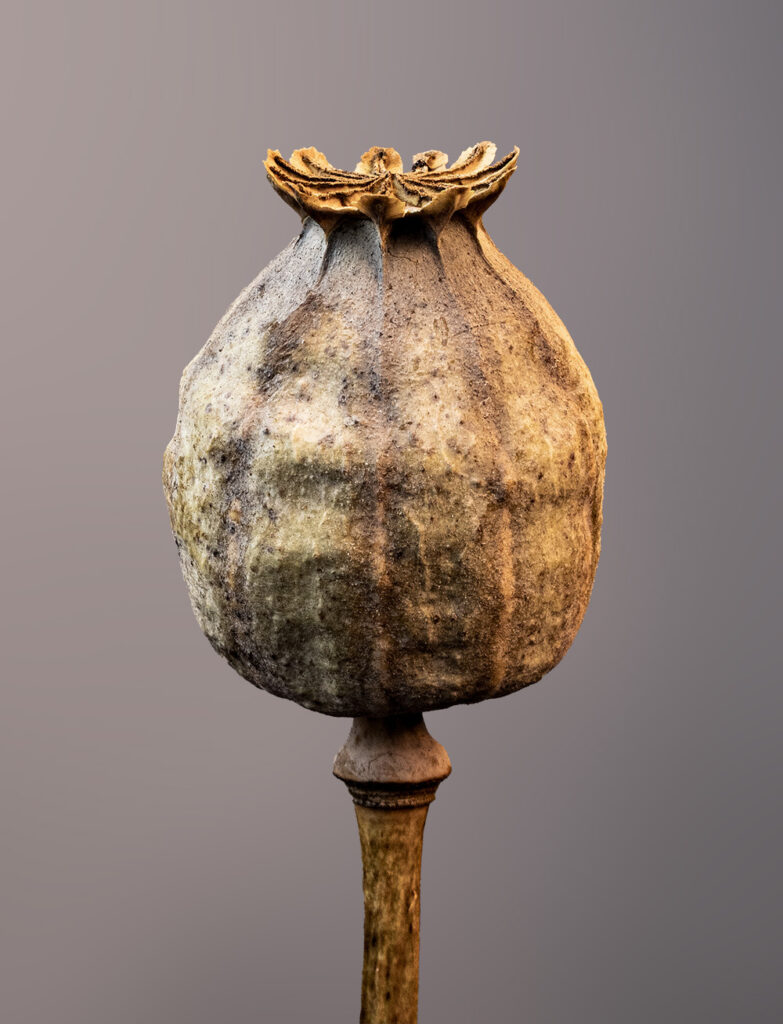

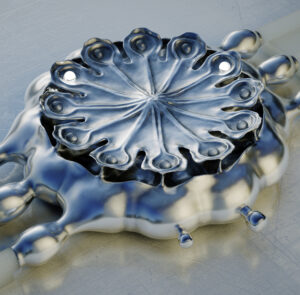
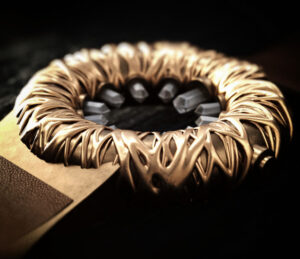
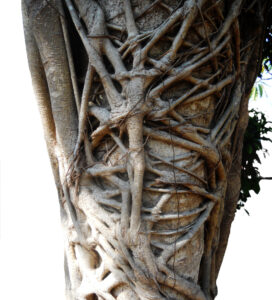

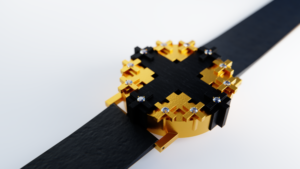
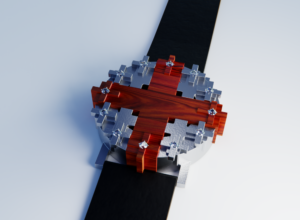
Leave a Reply